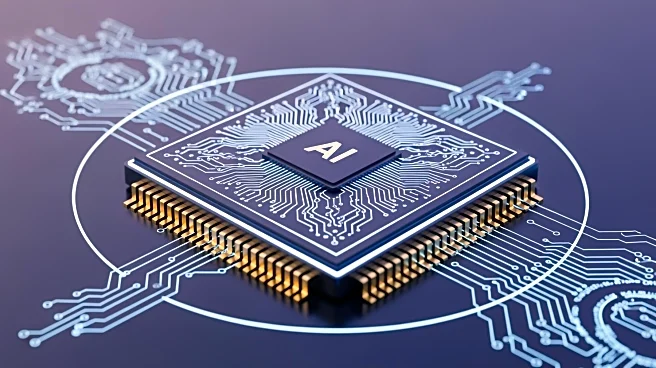What's Happening?
Researchers at the USC Viterbi School of Engineering have made significant advancements in neuromorphic computing by developing artificial neurons that closely mimic the electrochemical behavior of real
brain cells. This breakthrough, detailed in Nature Electronics, represents a major step forward in creating chips that are more energy-efficient and capable of advancing artificial general intelligence (AGI). Unlike traditional digital processors, these artificial neurons replicate the analog processes of biological neurons, using specific chemicals to initiate computation. The innovation, led by Professor Joshua Yang, involves a new type of artificial neuron built with a 'diffusive memristor,' which uses the movement of atoms rather than electrons for computation. This approach allows the neurons to operate more like those in the human brain, offering greater energy efficiency.
Why It's Important?
The development of these neuromorphic chips is crucial as it addresses the growing energy demands of artificial intelligence technologies. Current computing systems require significant energy to process large datasets, which is not sustainable in the long term. By mimicking the brain's efficient use of energy, these new chips could drastically reduce energy consumption, making AI more sustainable. This innovation could lead to smaller, more powerful chips that enhance the capabilities of AI systems, potentially bringing us closer to achieving AGI. The implications for industries reliant on AI, such as technology and healthcare, are substantial, as these chips could enable more advanced and efficient AI applications.
What's Next?
The next steps involve integrating large numbers of these artificial neurons to test how closely they can replicate the brain's efficiency and capabilities. Researchers are also exploring alternative ionic species to replace silver, which is not compatible with conventional semiconductor manufacturing. The successful development and implementation of these chips could lead to new insights into brain function and further advancements in AI technology. Stakeholders in the tech industry, including semiconductor manufacturers and AI developers, are likely to monitor these developments closely, as they could revolutionize the way AI systems are designed and operated.
Beyond the Headlines
This breakthrough in neuromorphic computing not only promises to enhance AI efficiency but also raises ethical and societal questions about the future of AI. As these chips become more brain-like, they could lead to AI systems that are capable of more autonomous decision-making, which may require new regulatory frameworks and ethical guidelines. Additionally, the potential for these chips to uncover new insights into brain function could have implications for neuroscience and the treatment of neurological disorders.












